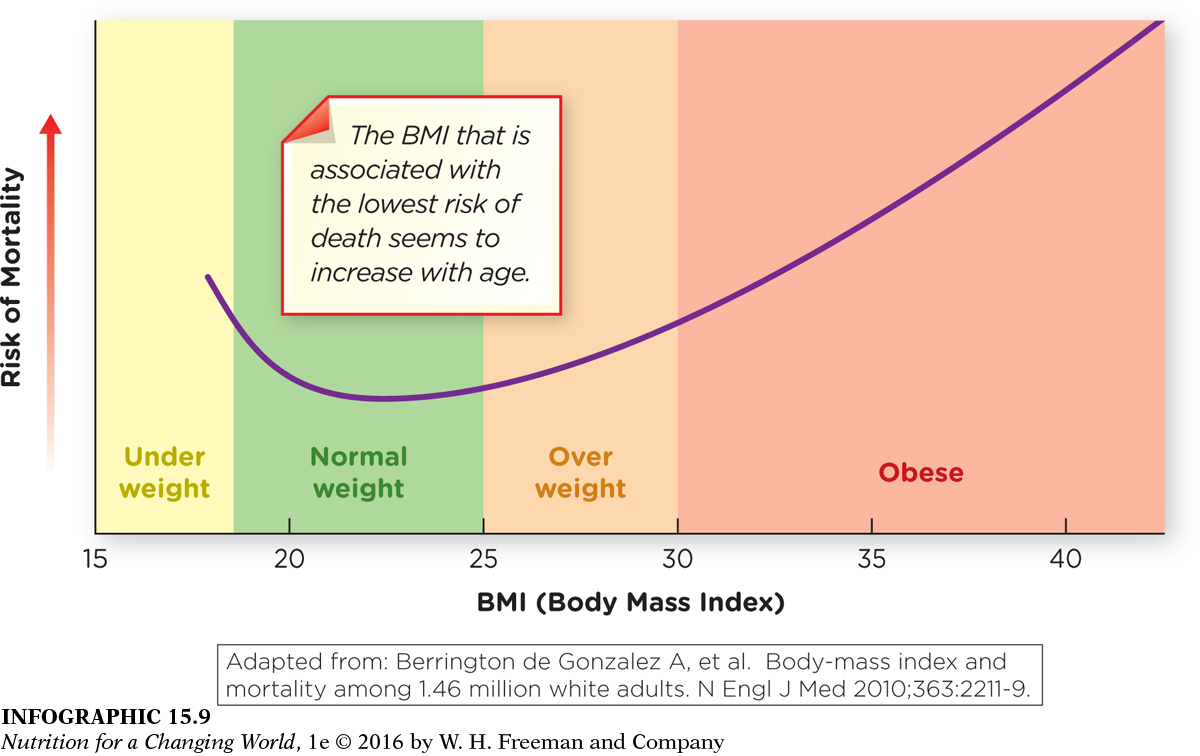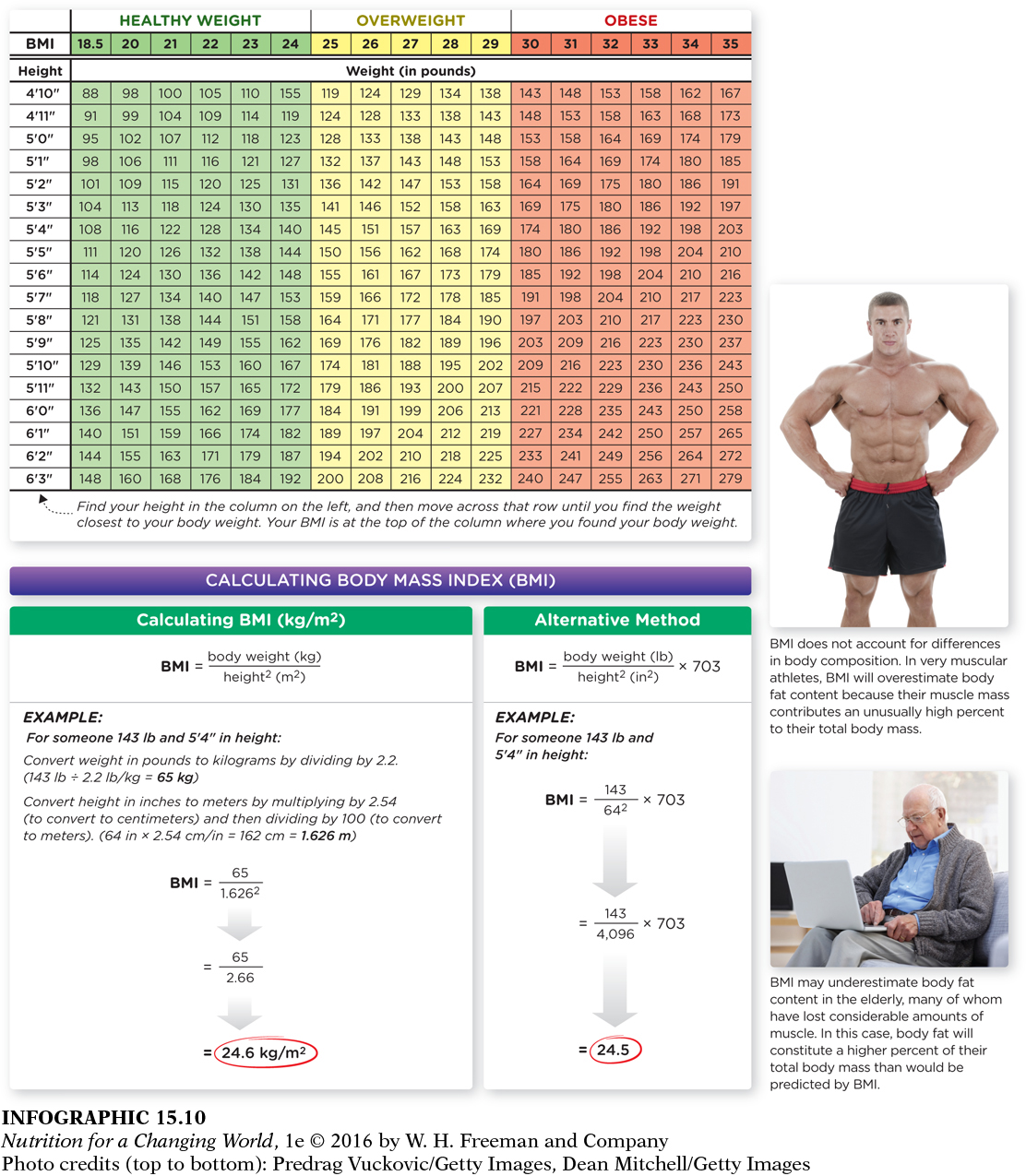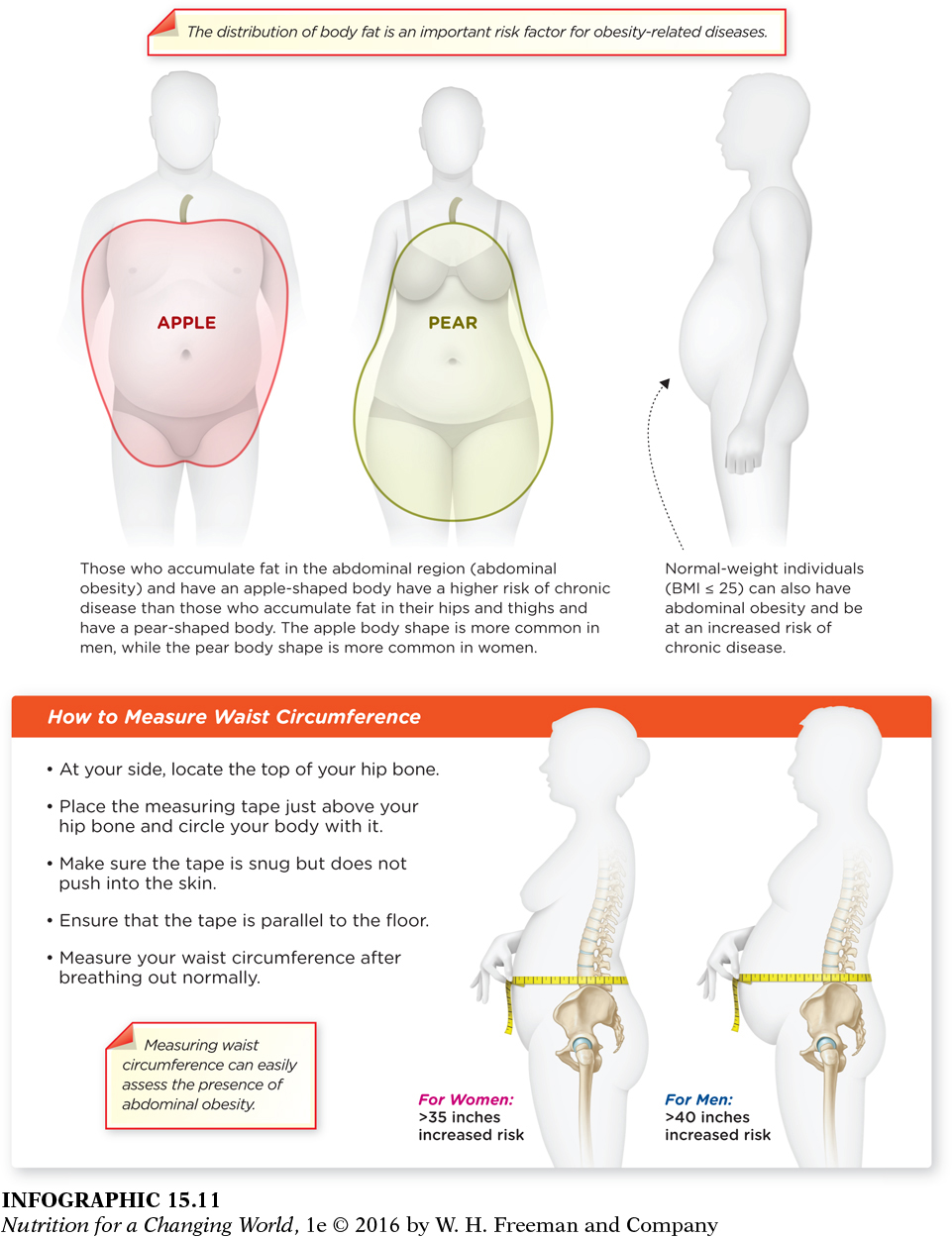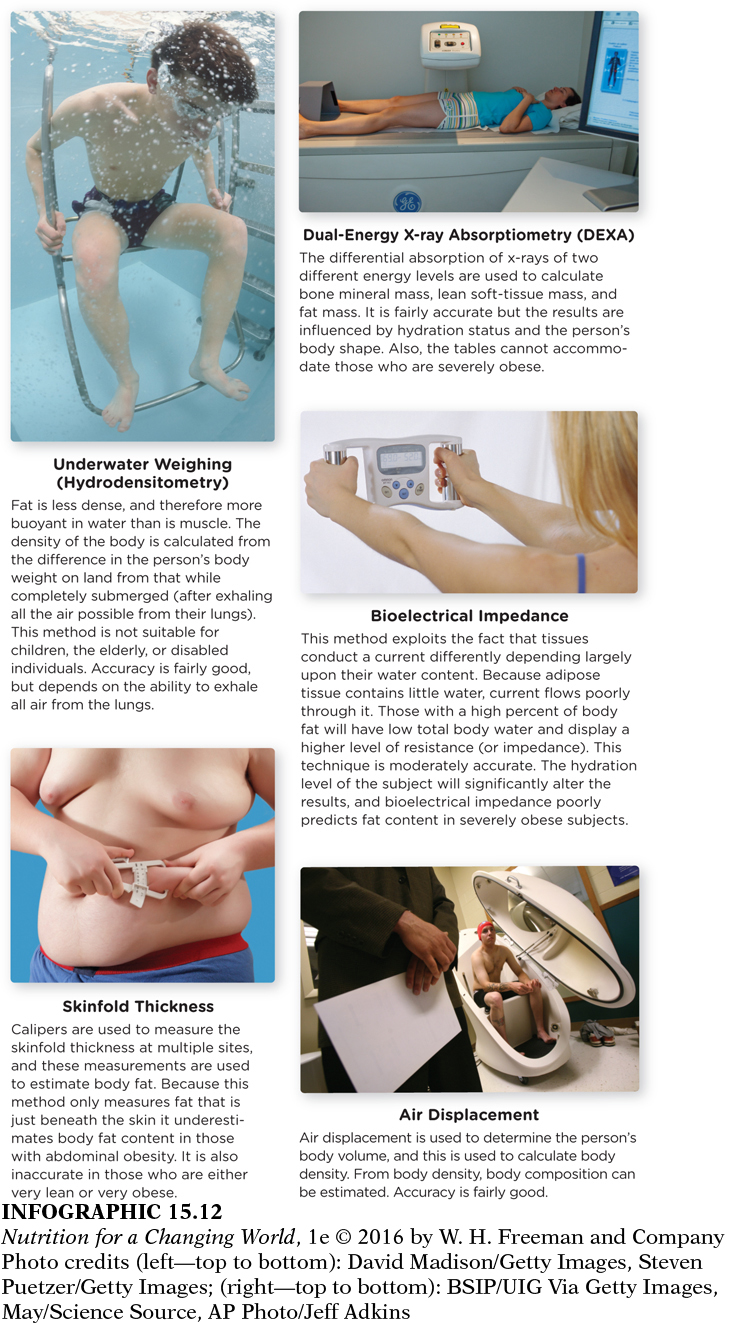LIFESTYLE AND ENERGY BALANCE
One hundred fifty years ago, 90% of the world’s population lived in agricultural regions. Much like our distant evolutionary ancestors, they walked to work, performed manual labor, and walked home at the end of the day. They manually prepared their food and washed their clothes. Physical work—

Today, in developed countries, most people live in cities and work behind a computer. A modern person sits during his drive to work, sits all day at work, sits to drive home, and sits in the evening watching television, surfing the Internet, or playing video games. “In a mere 150 years,” says Levine, “Homo sapiens has become addicted to the chair.”
Notably, in adopting this sedentary lifestyle, Levine estimates that humans have decreased their NEAT by approximately 1,500 kcal per day. At the same time, we have continued to eat similar amounts of—

Question 15.8
 What factors might pose significant challenges for you as you seek to avoid weight gain?
What factors might pose significant challenges for you as you seek to avoid weight gain?
Possible answers include the food environment, portion sizes, fewer home-
Of course, not everyone who lives in our modern society becomes obese. Why is that? Levine would say that is because some people naturally have higher NEAT than others. These high-
“The brain is just like a muscle,” says Levine. “If you exercise a muscle, it gets bigger and stronger, and if you exercise and activate your brain, your brain becomes NEATER.”
What is a healthy body weight?
Although it is difficult to determine an ideal weight or body fat level, we do know that health risks are associated with body weight status. It is possible, for example, for a thin person to be less healthy than an overweight person (especially if the thin person is a smoker). (INFOGRAPHIC 15.9) Some research even suggests that being slightly overweight is associated with higher longevity than being underweight. Nevertheless, the link between obesity and health risks is irrefutable, and health professionals need a guide for action.

Body mass index
BODY MASS INDEX (BMI) an indirect measure of body fat calculated from a person’s weight and height
The most common tool for assessing body fat is the body mass index (BMI). BMI is calculated from a person’s weight and height and provides an indirect estimate of body fat. “Underweight,” “normal,” “overweight,” and “obese” are all labels for ranges of weight on the BMI scale. The greater the BMI, the higher the risk of obesity-

Question 15.9
 Calculate your BMI using one of the methods above.
Calculate your BMI using one of the methods above.
Answers will vary but one of the following formulas must be used.
BMI = Body weight (in kilograms) divided by height (in meters) squared
or
BMI = Body weight (in pounds) multiplied by 703, divided by height (in inches) squared
Although easy to use, BMI has limitations. For example, BMI does not distinguish between excess fat, muscle, and bone mass, and may thus overestimate body fat in muscular individuals, such as highly trained athletes who have increased muscle mass.
Waist circumference
VISCERAL FAT fat in the abdominal area that surrounds the body’s internal organs; has been shown to be an independent health risk
Another way to assess whether a person’s body fat level carries health risks is to measure waist circumference, which is an indicator of abdominal obesity. Waist circumference indicates body fat distribution—

Question 15.10
 Why is abdominal obesity of more concern than excess fat in the hips and thighs?
Why is abdominal obesity of more concern than excess fat in the hips and thighs?
Abdominal fat mass is more metabolically active than fat mass in the hips and thighs. That is, it produces more hormones and hormone-
Analyzing body composition
BMI and waist circumference provide useful estimates of body fat in most people, but they are both indirect measures; they do not actually measure an individual’s body composition in terms of fat, muscle, bone, and so forth. A variety of additional methods that better determine body composition are available to researchers and health professionals. These include measuring skinfold thickness with calipers, underwater weighing, and air displacement. All methods estimate percent body fat, but vary in terms of their sophistication, cost, and accuracy. Levine and his colleagues, for example, used a highly regarded research method called dual-
One method of estimating body composition that has become accessible to the general public is bioelectrical impedance, which is the method used by home bathroom scales or handheld devices that measure body fat content. It is interesting to note that although scientists and health care providers agree that excess body fat is risky, there is little scientific consensus and no established standards on exactly how much excess body fat would identify someone as obese or at increased health risk. (INFOGRAPHIC 15.12)

Question 15.11
 If you want your body composition assessed, which method would you choose and why?
If you want your body composition assessed, which method would you choose and why?
Methods include dual-
For the average person, BMI is still the most accessible indicator of health risk, since it only requires knowing his or her height and weight. BMI is also what health professionals (and insurance companies) typically use to help determine what intervention may be warranted for overweight or obese patients.